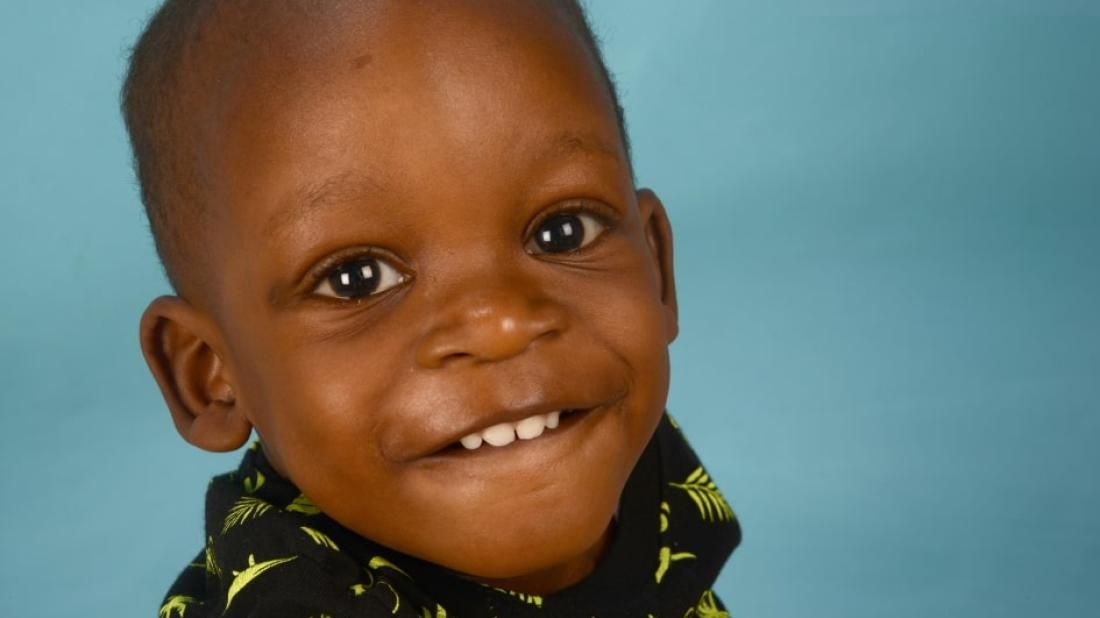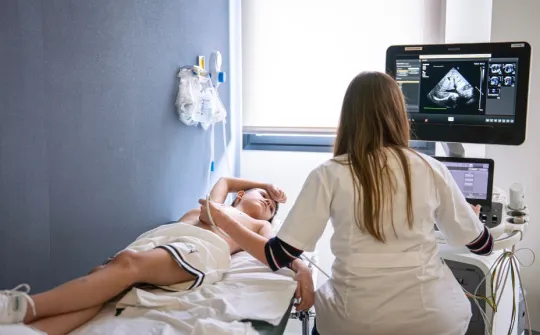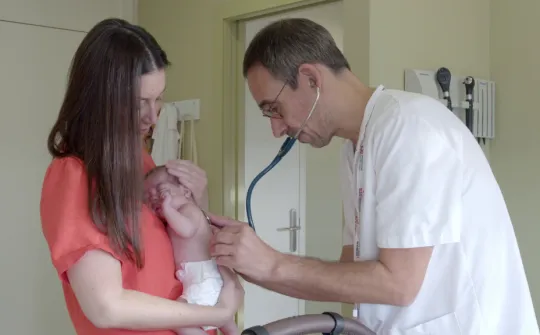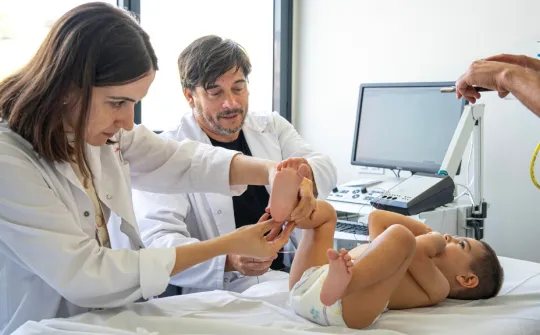
Angela, Daniel's aunt, explains how her nephew travelled from Nigeria to Barcelona to undergo surgery for a congenital pulmonary airway malformation
"They told my sister that, for her son to be cured, they had to pray a lot and hope for a miracle," explains the aunt of Daniel, a patient from Nigeria with a congenital pulmonary airway malformation (CPAM). "They visited as many as five hospitals in their country of origin and in the last centre, one of the doctors said that my nephew could not be operated on there, but perhaps he could in other countries," explains Angela, Daniel's aunt.
"When he was six months old, Daniel was not growing like his twin sister, he began to lose weight and at night he breathed more and more quickly and with more difficulty," recalls Angela. The child was suffering from a congenital pulmonary airway malformation that is characterised by the generation of large cysts that swell with air and that make breathing ineffective, since they compress the affected lung and also the rest of the organs of the rib cage (the unaffected lung and heart, for example).
"The case came to us when the boy was 16 months old: the child already had a basic diagnosis and everything was well documented", explains the head of the Paediatric Surgery Department of the SJD Barcelona Children’s Hospital and surgeon who operated on Daniel, Xavier Tarrado. The situation had become complicated in the country of origin because the child could only be held and could not do much: he could not play or walk. Furthermore, any respiratory infection could be life-threatening. "The case arrived at the Hospital through the child's aunt and, once the reports had been studied, it was accepted within the framework of the Cuida'm program because in this type of malformation we can perform a curative treatment that allows recovery without sequelae for the child to return to his country of origin", explains Dr Tarrado.
Planning surgery, key to safely preserving as much of the affected lung as possible
When Daniel was admitted for the surgery, several studies were carried out and, by means of CT scan, it was possible to locate precisely where the cysts were. Due to its large size, the entire lung initially appeared to be affected. Thanks to the three-dimensional reconstructions, it was found that the malformation only affected the upper lobe (which completely collapsed the lower lobe) and that a part of the upper lobe itself could be preserved. "A series of vascular reconstructions were performed to resect the minimum necessary part of the lung," says the surgeon.
"Although the enormous size of the lesion seemed to make an endoscopic approach impossible, we decided to try it to avoid opening the thorax with the consequences that this would cause to the patient. Through thoracoscopy, using four small incisions of 3 and 5 millimeters, we collapsed the cysts one by one until we achieved enough space to perform the resection of the malformation, preserving the lingula and lower lobe. Once done, these parts of the lung rapidly unfolded to an almost normal volume," explains Xavier Tarrado.
Two weeks after surgery, Daniel's X-rays showed almost normal lung anatomy and lung function recovered without problems. "The child went from being only in his mother's arms to running and jumping and the respiratory distress disappeared. This disease compromised not only growth, but the child's life, since any respiratory infection would have had a risk of very serious complications", concludes Dr Tarrado.
"In Sant Joan de Déu they have cured Daniel of a lung malformation that put his life at risk. For us it has been like a miracle because it seemed that Daniel's problem would never be solved, and today he is safe and sound, growing up and doing what children his age do." Angela, the child's aunt, celebrates: "Now the child is not still even for a moment and is happy."
SJD Barcelona Children’s Hospital, a leading centre for the treatment of congenital pulmonary airway malformation
The estimated incidence in Europe of congenital pulmonary airway malformations is approximately one in 2,500-12,000 new-borns. At the SJD Barcelona Children’s Hospital, a leading centre in Catalonia for these pathologies, between 8 and 10 cases are operated annually. Surgeries are performed thoracoscopically and, in cases that allow it, an attempt is made to preserve as much of the lung as possible (thanks to anatomical segmentectomies).
The main benefit of this minimally invasive approach is lower morbidity compared to thoracotomy (which can lead to thoracic and vertebral deformities) and it entails a shorter length of stay and fewer complications. Despite this, still less than half of these surgeries are performed this way in Europe. SJD Barcelona Children’s Hospital has operated on more than 80 cases of congenital pulmonary malformation with this minimally invasive approach with very good results and an average postoperative stay of three days.



